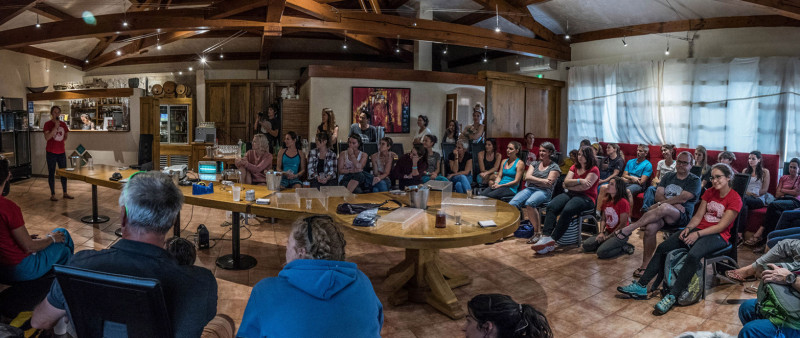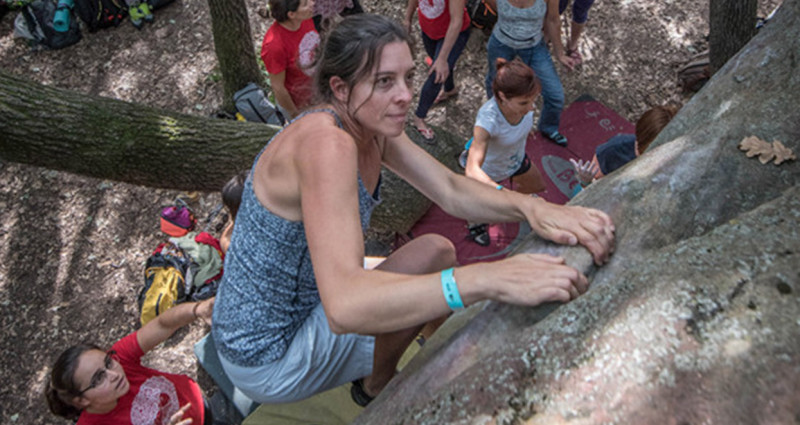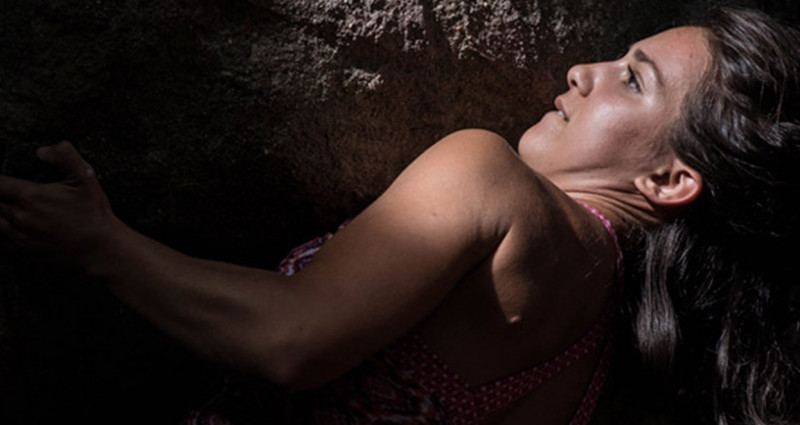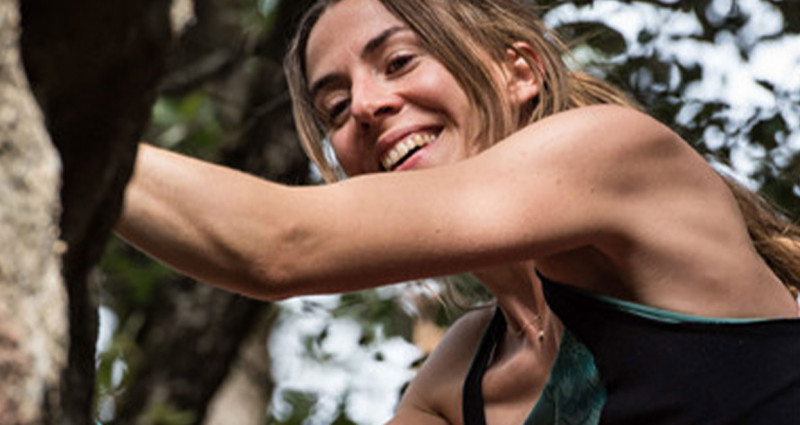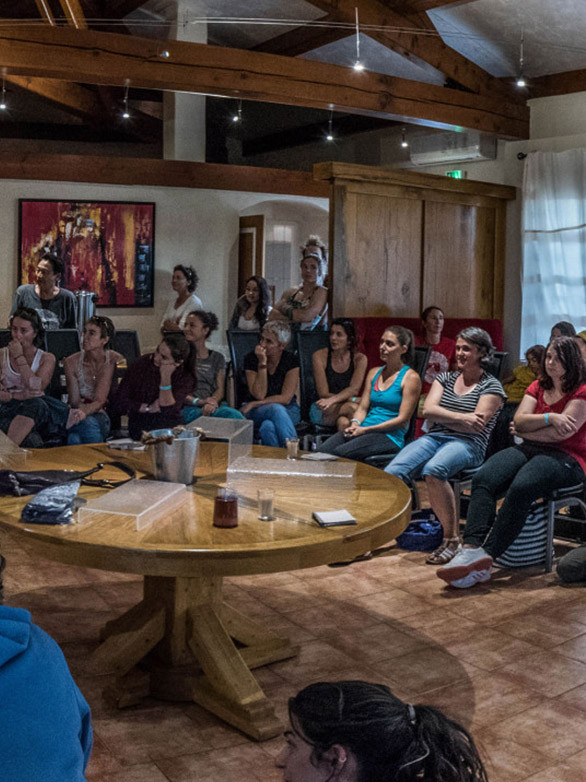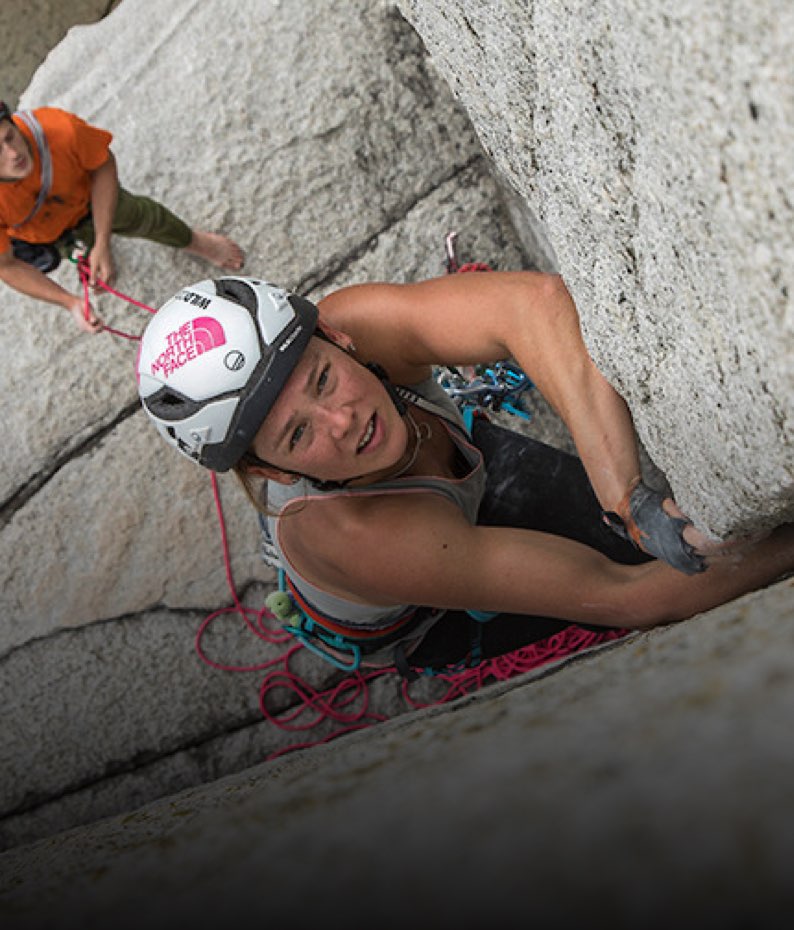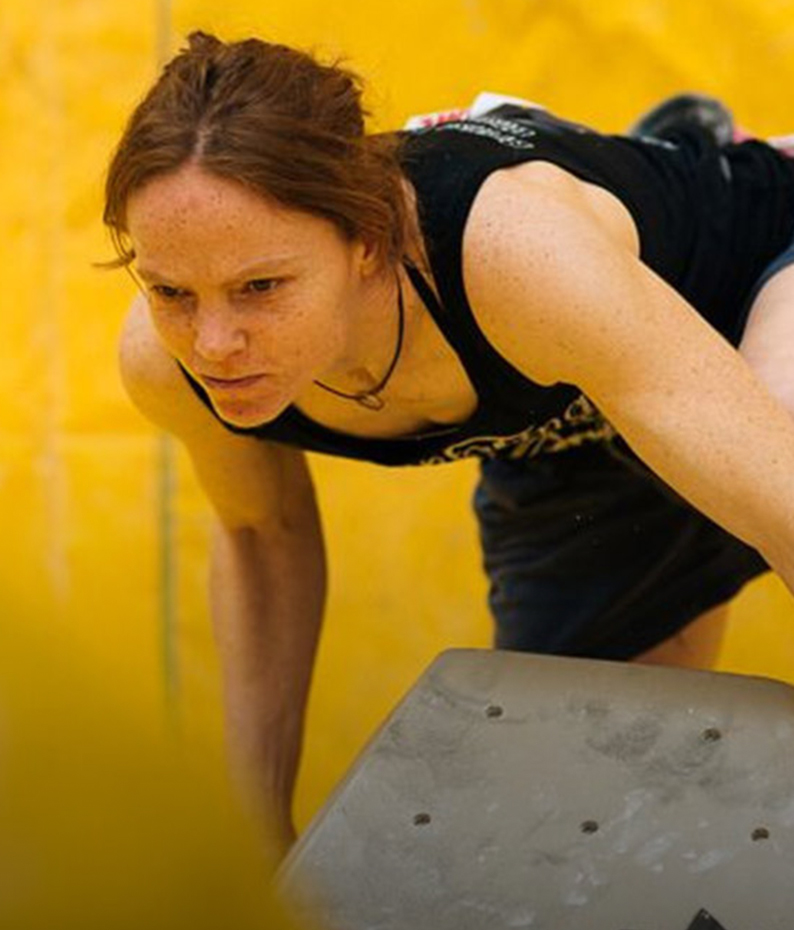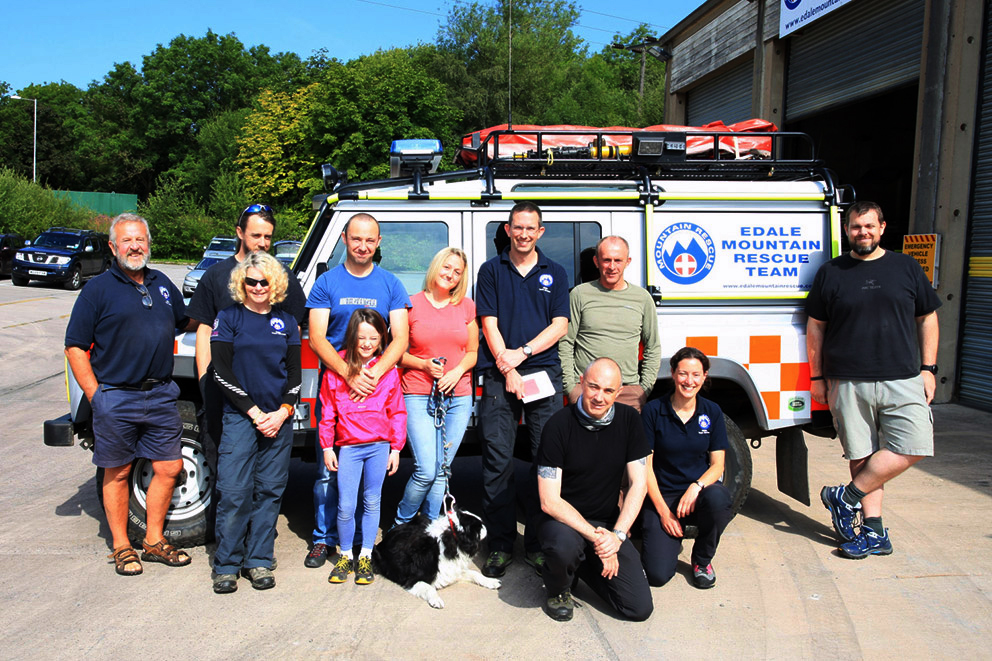Grimpeuses - Empowering Dreams
Caroline Ciavaldini shares her motivation in helping to develop Grimpuses; the first international Women's Climbing Symposium
Building A Community, The Olympics, & Role Models
5 years ago I didn’t think much of "feminism".
I didn’t think that I needed it, I didn’t see how being a girl made any difference in my life. I was pushing my level as a climber, and the idea of getting together with 400 women for a day didn’t mean much to me.
Then I got invited by the team of the Women’s Climbing Symposium to make a speech at the event. I only went because I was being paid; I really didn’t expect much of it.
But at the end of the day, I could see 400 women with huge smiles on their faces. The day had motivated them to climb more, focus on their progress, and push their boundaries. I couldn’t explain what or why, but clearly something was happening on that day and it largely moved me.
I left the event joking with the organizers “when will you do an event in France?” But I didn’t think much more of it. I would let the idea mature a little before I re-recognized the importance of this event. It was when I got to go bouldering for a day with a crew of 7 girls in the US, that I saw again that spirit of pure camaraderie, with no negative emotions, no need to be pretty, no need to seduce, just climbing together and pushing each other to do their best… And I decided: let’s do a French Women’s Climbing Symposium, let’s do “Grimpeuses” (French for a female climber).
It all started rolling, and still, I didn’t have the words, the tidied reasons: why did we need a day with zero guys, what was it exactly that we had to help women realize? I went back to a psychologist who had been my mental coach during my competition years, he would help me understand this better so that when people asked, no moaned about “why no boys”, I would be able to formulate the drive in me into a verbal answer.
In 2018, in Europe, women can be president. They can be a CEO, work hard, earn as much money than men. It is not a finished battle in the sense that is for sure; we don’t have 50% women presidents in the EU, but nowadays it is a mentality change that is ongoing, and give it enough generations, we’ll get there. But the laws have been changed; one could even argue that the gender equity laws are “making things harder for men, easier for women, as sometimes the competition isn’t equivalent.
But here is the thing, even with all the laws in place, it can’t change instantly, because of the weight of culture and history.
"Clearly, history doesn’t tell us that women and sport can go together"
If you look back in women’s sports history you actually can’t get back that far… women were only allowed to take part in the Olympic games in 1900 (this is an event that dates back to the times of ancient Greece!!!) and when we were allowed it was only in a few disciplines. Disciplines that were said “compatible with their feminity and fragility “, and even in the 1960’s, there were only 20% of women in the Olympic games. In 1972 women were allowed for the first time to compete in marathons, and that took a lot of fighting; people believed that if a woman ran for a long time her reproductive organs would go down…
Clearly, history doesn’t tell us that women and sport can go together. So much so that even now, people still think and say that big muscles aren’t a feminine attribute. How then, can you convince a little girl that she should aspire to be strong too?
Now, if you worry about women and physical activity, let’s look at “adventure, danger, risk-taking”.
Historically, there are no great women heroes, or barely any. No knights, no great explorers. Women were supposed to stay home and take care of the family. Little girls from the 60’s had no female role models, rather the examples to follow were Cinderella, Sleeping Beauty, and the likes of princesses… If you grew up as a little boy, you were not “allowed” to be scared after a certain age… If you were a girl though, showing fear could sometimes be a plus, an attraction trick to play on men. How then, would you push a woman to “go big or go home”, climb on committing routes, take on difficult physical challenges. None of her family has likely done this before; not her mom, aunts, grandmas, no one and society didn’t see that kindly to challenge these norms.
History is a heritage. Good and bad. Now for women’s development in climbing, clearly History has been a negative input. Now that we know that there is no gene of courage specific to the Y chromosome, it is time to become aware of that negative heritage to be able to go past it."
I was lucky to be invited to my first women’s climbing symposium. It did trigger a long-term reflection that helps me today go towards adventures, for all the discoveries that go with it and all the joys it brings me. I hope I can help, if only just a little to get the ball rolling in other women’s minds until they question: “what makes me dream”, and don’t get stopped by “what am I afraid of”.
See you at the next Women’s Climbing Symposium!
See the full event at Grimpeuses
Click to learn more about the Women's Climbing Symposium

1 ISLAND, 2 MONKS AND UNTOUCHED GRANITE
“Why did James and I pick a small dot on the other side of the planet?”
Because Yuji told us about it. The last time Yuji proposed us a trip, we ended up in Kinabalu, the now oh so famous mountain where untouched granite will overwhelm the climber. The Real Rock tour has thrown Kinabalu into fame, but 5 years ago, when we went there, no climber could even put it on the climbing
Kinkasan is a small island not far from Fukushima, on the north east side of Japan. It has 26km circumference and is inhabited by two monks. From Tokyo it is a six hour journey. Yuji didn’t say that much more: Kinkasan’s coast is covered with granite cliffs, and there is a Shinto shrine on it. Yuji mentioned as well the damages made by the tsunami…
We began our journey with next to no expectations about the climbing, and a big question mark for the rest. 3 days in the trip and I know exactly why we came: for Japan.
2 years ago we spent a week in this unique country and both James and I knew that we had to come back one day: how could I compare it? Well, the first time you taste wine, you have heard a lot about it. But you smell, and you only smell the alcohol, you taste and you can’t put words on it because wine is subtle, complicated and requests an education. You have to go back to it, learn to enjoy, differentiate and remember. Japan is maybe a little bit like wine.
There is this astonishing mix of modernity (the Japanese toilets and their multi jets, music and self cleaning options give you an idea of the immensity of your difference) and spirituality, respect, focus.
We arrived at Base Camp, the gym that Yuji opened 5 years ago in Tokyo, and I oscillate between marvel and shame. I am a pro climber, and most of the boulders are too hard for me, the Japanese climbers around me seem to evolve so effortlessly, like flying cats on the wall. But then you realise: the world championship have just finished in Paris and in the bouldering competition, 3 of the 6 medals are not only Japanese, but from Tokyo, from Base Camp. Yuji and his company helps the athletes become professional and they often climb together. Shall I repeat that? Half of the world’s medals come from one gym! Surely there is no wonder that Yuji owns that gym… But that is only just the very top of the iceberg, because behind this 3 medals, there are a lot of other athletes with an incredible level. I have never seen so many good, extremely good boulderers in one place. And I am a former competition climber, trust me, I know what I am talking about.
“Why are they so good?”
The answer is surely complicated but here are a few elements: climbing has become very trendy in Japan, with over a 100 gyms in Tokyo. The Japanese body type is perfect for climbing; light, powerful and explosive muscles. The Japanese constant pursuit of perfection pushes the athletes to train hard, just like everyone around them simply accomplished every task with perfection.
It was dry for the crossing, and after unpacking our bags at the shrine we bouldered on a nearby beach for 1 hour before the rain came. With so much rock to see and so little time, we hiked out anyway along the coast to search out potential lines. The rain became heavier, we became wetter, and after 4 soggy hours we returned to the shrine, hopes high but spirits low. We’d been preparing this trip since September 2015, putting the team together, finding funding from sponsors, organizing the local logistics, yet it would all be in vain if the weather didn’t brighten up.
A morning of rain gave us the excuse to sit down and record some interviews, though truthfully we had little to say as we’d done little climbing. Toru, ever the silent optimist finally dragged me out to the closest boulder spot during a break between two showers, and we were surprisingly able to climb! Toru lived up to his reputation of boldness and brilliance, making the first ascents of two of Kinkasan’s boldest and hardest problems. Finally things were looking up. The forecast was good for the following days, and group psyche could not have been higher. We began to plan our upcoming adventure and our first trip to the other side of the island – the area with the highest concentration of rock, and the biggest cliffs, but had to cut them short as bad news broke.
With my thirst for climbing temporarily quenched, we left the island in limbo, happy, yet sad, but knowing we’d be back in less than 24 hours. We passed the day visiting some of the worst tsunami affected towns in an effort to better understand what hardships the local people had to live through, and how they are moving forwards towards the future. It is one thing to watch the news from the comfort of your lounge back home, it is another thing entirely to see it first hand, and speak to the people who have lost everything - houses, possessions, loved ones!
Suddenly our troubles with the rain seemed embarrassingly small, and we remembered why we were actually here in the first place.
Our personal climbing desires must come second to the larger goal of showing this place to the world. Rain or shine, we have to get out there. Hike around, document the potential, and if in the end we are lucky, open up some new routes.

